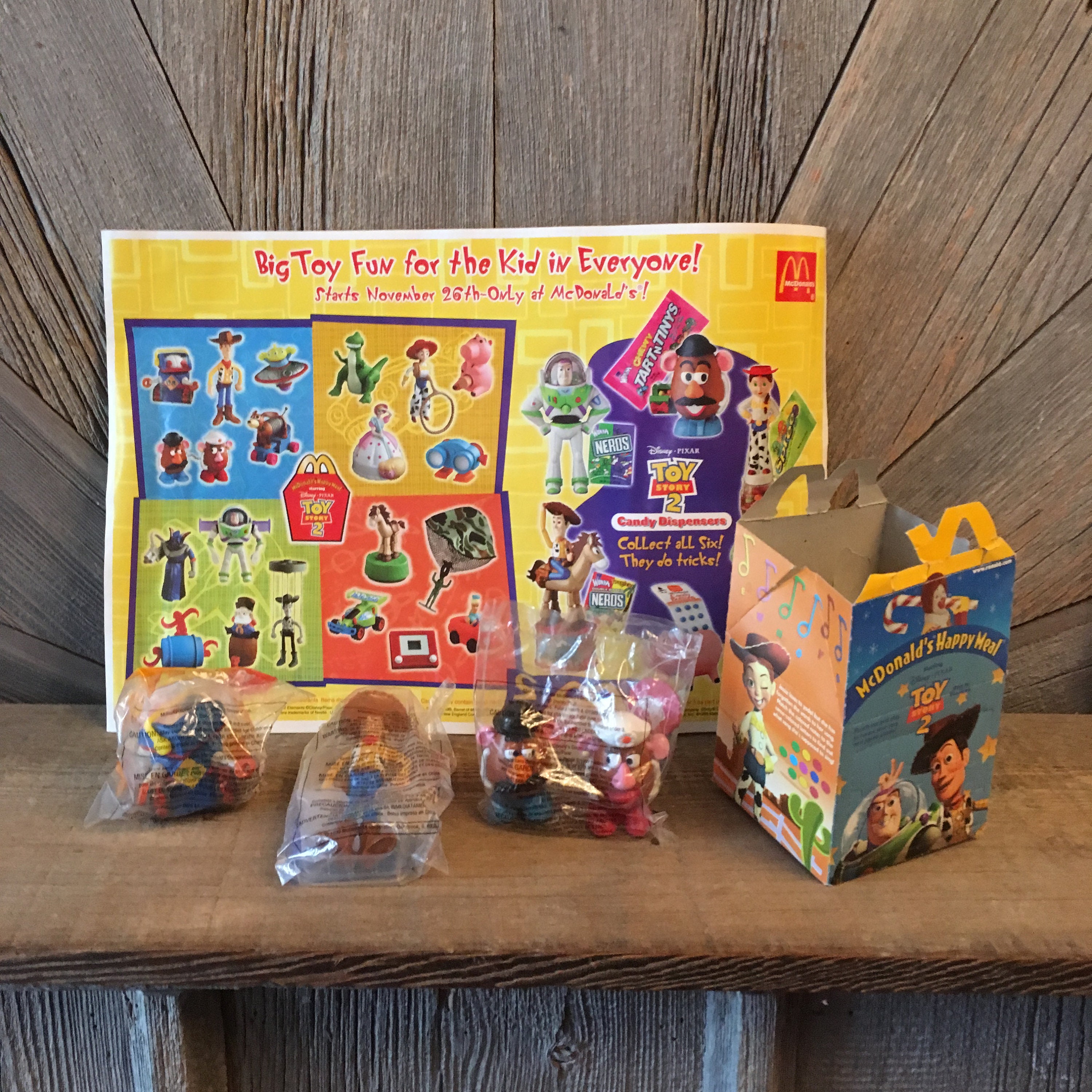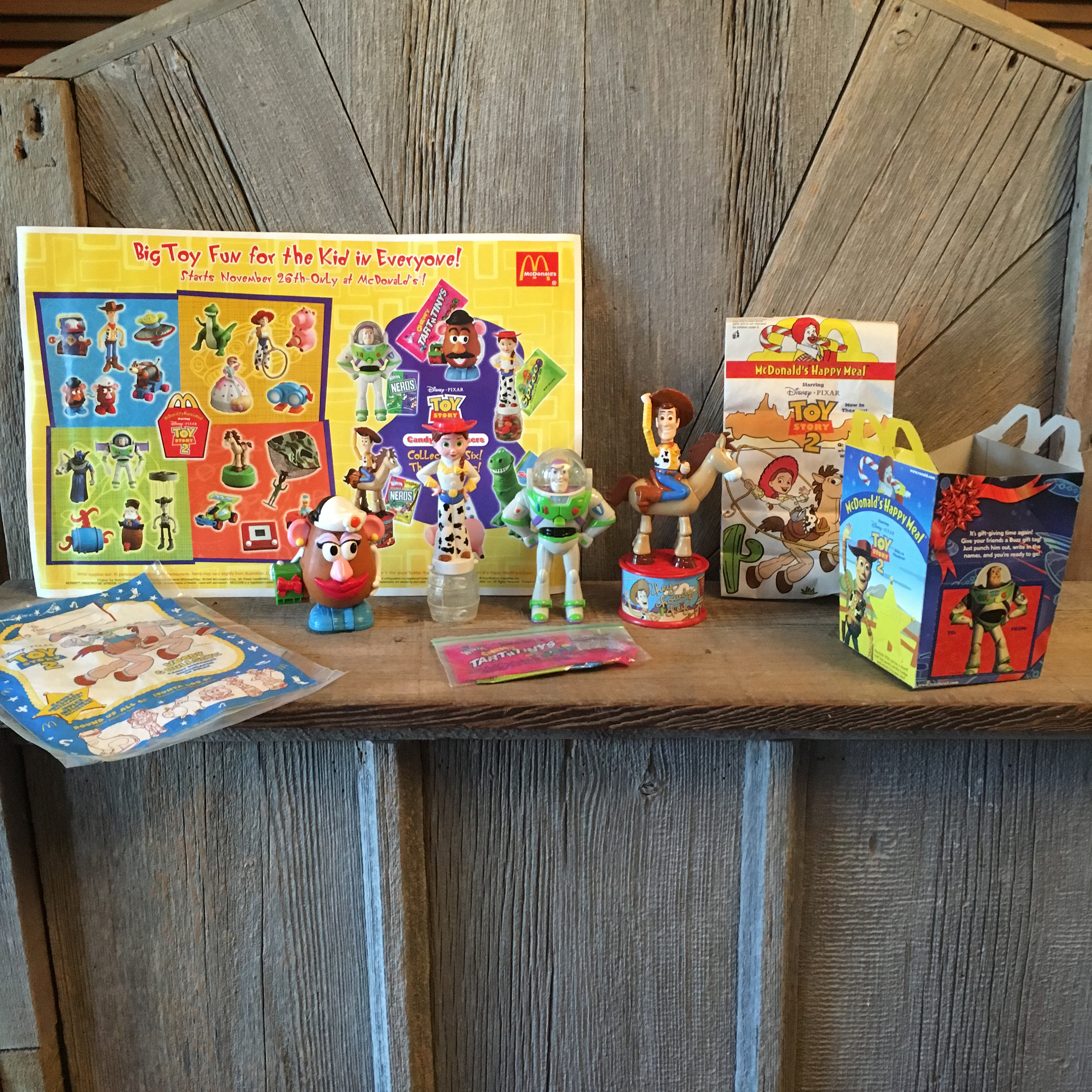McDonald's toys have been an integral part of countless childhood memories worldwide. For decades, these small but cherished collectibles have brought joy to children and adults alike. Beyond their playful appeal, McDonald's toys hold a fascinating history that weaves together corporate strategy, marketing brilliance, and the power of nostalgia. This article takes you on a journey to uncover the story behind McDonald's toys, exploring their evolution, impact, and why they remain a timeless treasure.
From the first Happy Meal introduced in 1979 to the highly sought-after collectible series today, McDonald's toys have captured the hearts of generations. These tiny playthings are more than mere promotional items—they symbolize the emotional connection between a global brand and its consumers. In this article, we'll delve into the history, design, and cultural significance of these beloved toys.
As we explore the story behind McDonald's toys, we'll uncover the strategies that have made them an enduring success. Whether you're a nostalgic collector or simply curious about their origins, this article will provide a comprehensive look at how McDonald's toys have shaped the world of fast food marketing and childhood memories.
Read also:Anuel Aa And Diddy The Dynamic Duo Shaping Latin Music And Beyond
Table of Contents
- The History of McDonald's Toys
- The Birth of the Happy Meal
- Why McDonald's Toys Became So Popular
- Designing McDonald's Toys: A Creative Process
- Iconic Partnerships and Collaborations
- McDonald's Toys as Collectibles
- The Power of Nostalgia in Marketing
- Global Impact and Cultural Significance
- Controversies Surrounding McDonald's Toys
- The Future of McDonald's Toys
The History of McDonald's Toys
The story of McDonald's toys begins with the introduction of the Happy Meal in 1979. This innovative concept revolutionized the fast-food industry by combining a child-friendly meal with a small toy. The idea was simple yet brilliant: encourage families to dine at McDonald's by offering an extra incentive for children. Over the years, the Happy Meal has evolved, with its toys becoming a central attraction.
McDonald's toys have undergone significant changes in design, theme, and purpose. Initially, the toys were simple plastic figures, but as the years progressed, they became more intricate and engaging. The introduction of themed collections, such as those based on popular movies and characters, further boosted their appeal. Today, McDonald's toys are not just playthings but also collectible items for enthusiasts around the world.
The Birth of the Happy Meal
The Happy Meal was the brainchild of Len Bidwell, a McDonald's franchisee in Sacramento, California. He noticed that children were often drawn to the colorful packaging of McDonald's meals. To capitalize on this observation, Bidwell proposed the idea of adding a toy to the meal. The concept was a hit, and soon the Happy Meal became a staple in McDonald's restaurants globally.
Initially, the Happy Meal included a small booklet or puzzle as the "toy." However, as the program gained popularity, McDonald's began collaborating with major entertainment companies to create toys based on popular franchises. This marked the beginning of McDonald's toys as we know them today.
Why McDonald's Toys Became So Popular
Several factors contributed to the popularity of McDonald's toys. First and foremost, the association with the Happy Meal made them instantly appealing to children. The excitement of receiving a surprise toy with their meal created a sense of anticipation and joy. Moreover, the toys often featured beloved characters from movies, TV shows, and video games, making them even more desirable.
Another reason for their success lies in the limited-time availability of certain collections. This scarcity strategy encouraged families to visit McDonald's more frequently to collect all the toys in a series. Additionally, the affordability of the Happy Meal made it accessible to families from all walks of life, further expanding the reach of McDonald's toys.
Read also:Who Is The Goat Of Football The Ultimate Debate
Designing McDonald's Toys: A Creative Process
The design process for McDonald's toys involves a meticulous collaboration between McDonald's and various creative agencies. The goal is to create toys that are not only visually appealing but also safe and durable for children. Each toy undergoes rigorous testing to ensure it meets safety standards and quality expectations.
Some of the key considerations in the design process include:
- Theme selection: Aligning with popular movies, franchises, or seasonal events.
- Material choice: Ensuring the use of safe and eco-friendly materials.
- Size and functionality: Designing toys that are both fun and easy to play with.
Iconic Partnerships and Collaborations
McDonald's has collaborated with numerous entertainment giants to create iconic toy collections. Partnerships with Disney, Pixar, Marvel, and Nintendo have resulted in some of the most sought-after McDonald's toys. For instance, the "Toy Story" and "Star Wars" collections have become legendary among collectors.
These collaborations not only enhance the appeal of the toys but also strengthen McDonald's brand image. By associating with popular franchises, McDonald's taps into the existing fan base of these properties, ensuring a wide audience reach. Furthermore, these partnerships often lead to cross-promotional opportunities, benefiting both McDonald's and its partners.
McDonald's Toys as Collectibles
For many enthusiasts, McDonald's toys are more than just playthings—they are prized collectibles. The limited-edition nature of certain collections and the nostalgia they evoke make them highly valuable in the collectibles market. Some rare McDonald's toys have even been sold for thousands of dollars at auctions.
The collectible value of McDonald's toys is further enhanced by their packaging. Many collectors prefer to keep the toys in their original packaging, as it increases their worth. Online marketplaces and collector communities have sprung up around these toys, providing a platform for enthusiasts to share their collections and exchange rare items.
The Power of Nostalgia in Marketing
Nostalgia plays a crucial role in the enduring appeal of McDonald's toys. For many adults, these toys evoke fond memories of childhood visits to McDonald's. The brand has successfully leveraged this emotional connection to create marketing campaigns that resonate with both children and adults.
Research shows that nostalgia can enhance brand loyalty and encourage repeat purchases. McDonald's has capitalized on this by reintroducing popular toy collections from the past, allowing customers to relive their childhood memories. This strategy not only appeals to older generations but also introduces younger audiences to the timeless charm of McDonald's toys.
Global Impact and Cultural Significance
McDonald's toys have had a significant global impact, transcending cultural boundaries and becoming a universal symbol of childhood joy. In various countries, McDonald's has adapted its toy collections to reflect local preferences and traditions. For example, in Japan, the Happy Meal often features toys inspired by anime and manga characters.
The cultural significance of McDonald's toys extends beyond their entertainment value. They serve as a testament to the power of globalization and the ability of a single brand to connect with diverse audiences worldwide. Moreover, they highlight the importance of creativity and innovation in marketing, demonstrating how a simple idea can evolve into a global phenomenon.
Controversies Surrounding McDonald's Toys
Despite their popularity, McDonald's toys have not been without controversy. Critics argue that the inclusion of toys in fast food meals encourages unhealthy eating habits among children. Some health advocates have called for the removal of toys from Happy Meals, citing concerns about childhood obesity and nutrition.
In response to these criticisms, McDonald's has taken steps to improve the nutritional value of its meals. The company has introduced healthier options in the Happy Meal, such as apple slices and low-fat milk. Additionally, McDonald's has explored alternative marketing strategies, such as digital experiences, to reduce reliance on physical toys.
The Future of McDonald's Toys
As technology continues to advance, the future of McDonald's toys looks promising. The integration of augmented reality (AR) and virtual reality (VR) could revolutionize the way children interact with these toys. Imagine a McDonald's toy that comes to life through an AR app, offering an immersive play experience.
Moreover, McDonald's is likely to focus on sustainability in its toy production. The use of eco-friendly materials and recyclable packaging will be key priorities as the brand strives to meet the demands of environmentally conscious consumers. By embracing innovation and responsibility, McDonald's toys will continue to captivate audiences for generations to come.
Kesimpulan
The story behind McDonald's toys is a testament to the power of creativity, nostalgia, and strategic marketing. From their humble beginnings as simple plastic figures to their current status as global collectibles, McDonald's toys have left an indelible mark on popular culture. They have brought joy to millions of children and adults, creating memories that will last a lifetime.
We invite you to share your own McDonald's toy memories in the comments below. Are you a collector? Do you have a favorite toy series? Let us know! And don't forget to explore our other articles for more fascinating insights into the world of fast food and beyond.
References:
- McDonald's Official Website
- Statista – Fast Food Industry Statistics
- Forbes – The Business of Nostalgia
- Harvard Business Review – The Psychology of Nostalgia


